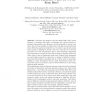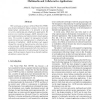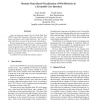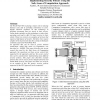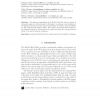ERCIMDL
1999
Springer
14 years 3 months ago
1999
Springer
I show that the World Wide Web is a small world, in the sense that sites are highly clustered yet the path length between them is small. I also demonstrate the advantages of a sear...
CQRE
1999
Springer
14 years 3 months ago
1999
Springer
Currently, the Internet and the World Wide Web on-line business is booming, with traffic, advertising and content growing at sustained exponential rates. However, the full potentia...
ICTAI
1999
IEEE
14 years 3 months ago
1999
IEEE
Locating useful information effectively from the World Wide Web (WWW) is of wide interest. This paper presents new results on a methodology of using the structures and hyperlinks ...
ACMSE
2000
ACM
14 years 3 months ago
2000
ACM
The World Wide Web has emerged as one of the most widely available and diverse information sources of all time, yet the options for acessing this information are limited. This pape...
MSE
2000
IEEE
14 years 3 months ago
2000
IEEE
With continuous acceptance of World Wide Web (WWW) as a de facto standard for human-computer interaction and human-human communication, it is desirable to develop net-centric, mul...
IWSSD
2000
IEEE
14 years 3 months ago
2000
IEEE
The work presented in this paper is part of a large programme of research aimed at supporting consistency management of distributed documents on the World Wide Web. We describe an...
IDEAS
2000
IEEE
14 years 3 months ago
2000
IEEE
From the beginnings of the World Wide Web (WWW or Web) and the definition of the Common Gateway Interface (CGI), Web site administrators have used dynamically generated HTML page...
DEXAW
2000
IEEE
14 years 3 months ago
2000
IEEE
Users of hypertext systems like the World Wide Web (WWW) often find themselves following hypertext links deeper and deeper, only to find themselves “lost” and unable to fin...
ACSAC
2000
IEEE
14 years 3 months ago
2000
IEEE
The World Wide Web is playing a major role in reducing business costs and in providing convenience to users. Digital Libraries capitalize on this technology to distribute document...
WEBI
2001
Springer
14 years 3 months ago
2001
Springer
The pages and hyperlinks of the World Wide Web may be viewed as nodes and edges in a directed graph. In this paper, we propose a new definition of the distance between two pages, ...

